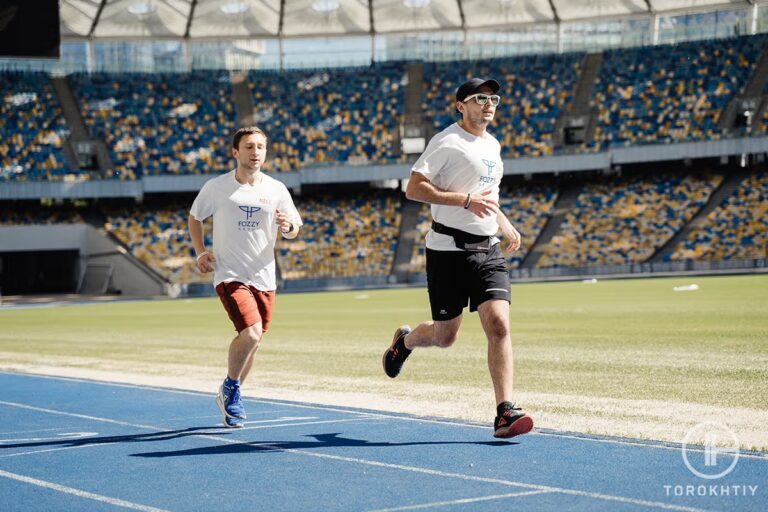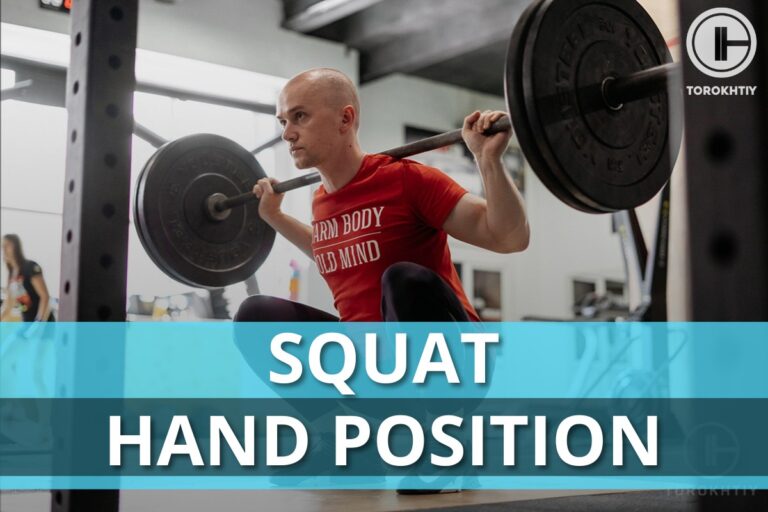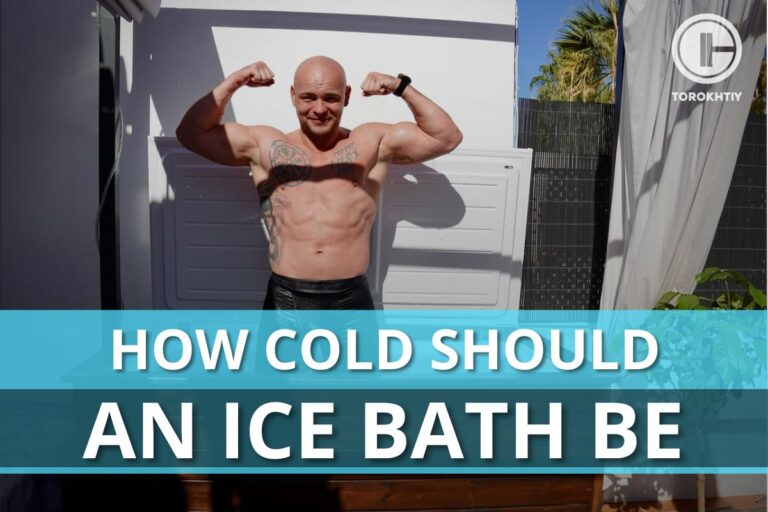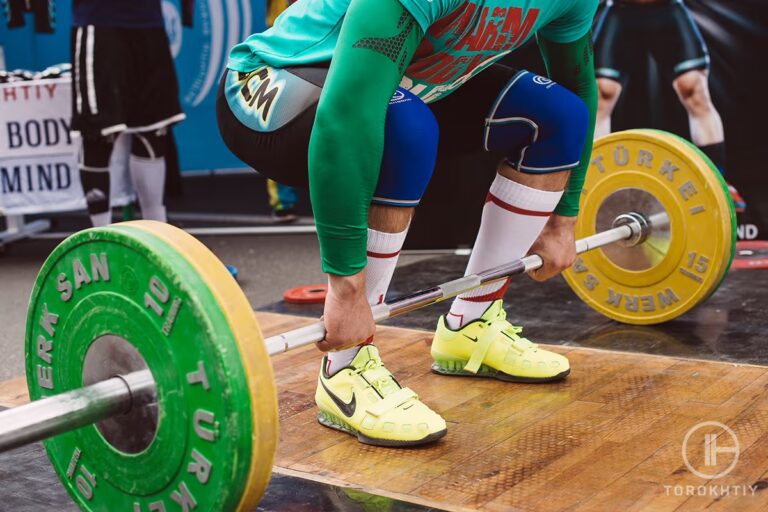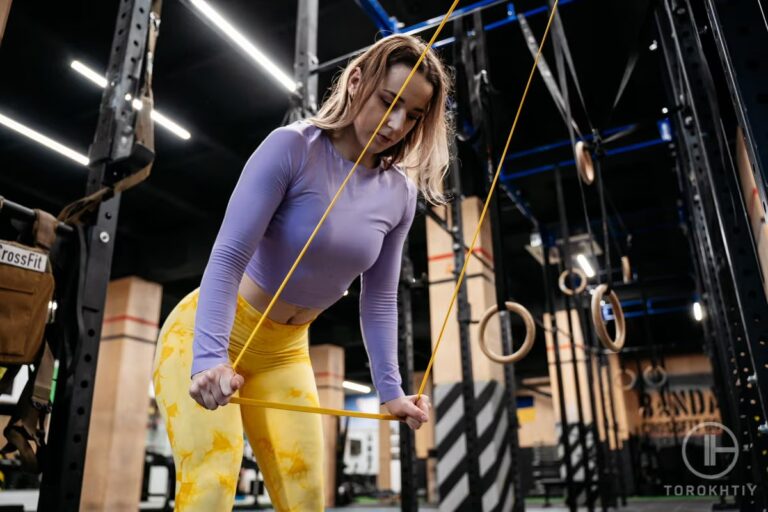How Long Should a Jump Rope Be: All Your Questions Answered
Jumping rope is one of the best exercises you can do. It’s easy to learn and very effective in working your muscles. Using a rope that’s too long or short, however, can be quite frustrating. So how long should a jump rope be? Let’s find out!
First, the short answer.
How long should a jump rope be? A jump rope should be about 3 feet longer than you. One easy hack is to step on the middle of your rope and hold it up taut. The ends of the rope (excluding the handles) should touch your armpit.
Now, let’s get into the long answer. We’ll talk about the proper jump rope length, why you should even care about jump rope length, and how to adjust your jump rope length.
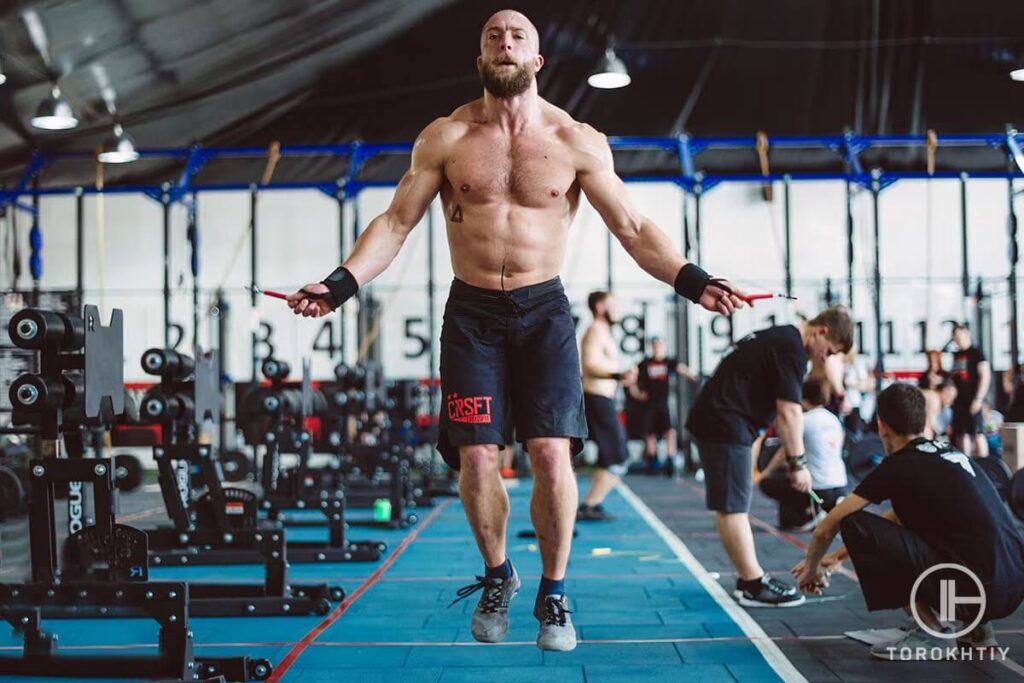
How Long Should a Jump Rope Be: Things to Consider
There is no one appropriate length for jumping ropes. Everyone has a perfect size for themselves. To determine the proper jump rope length for you, there are some factors to consider. Each one of these will help inform your decision.
1. Height
You must first measure your jump rope length by height. It’s the most important factor to consider. Your jumping rope must correspond to your height otherwise you risk tripping over it or having it drag on the floor.
A general standard to follow is to add 1-3 feet to your height. This gives sufficient space above your head and does not scrape the floor which could lead to loss of momentum.
2. Level of skill
How skilled you are is another determinant for what jump rope size is best for you. Different rope sizes will require different levels of skill and give you different results.
A smaller head gap means your body is more compact. This reduces fatigue in your muscles and lets you go faster but requires skill. Experienced athletes would favor it. A larger gap is easier to learn but is slower and more stressful. This is better for beginners. Eventually, you want to keep reducing rope length as you get better.
3. Personal fitness goals
Why do you jump rope? Are you an athlete looking to compete or just trying to warm up and get some cardio in? Your fitness goals will largely affect the length and type of rope you go for.
An athlete looking to compete or practice double-unders would prefer a smaller head gap to maximize speed and efficiency. A warm-up doesn’t require you to attain high speeds, only to help activate your muscles. And a casual gym goer only needs to break a sweat.
4. Handle length
As weird as this sounds, the length of your jump rope handles also affects what rope length you should pick. Longer handles increase the diameter of your swing and effectively make your rope longer, so if you pair long handles with a long rope, you’ll be left with a dragging rope.
Importance of Jump Rope Length
You might be wondering what all the fuss about jump rope length is. Picking the correct length for jump rope is very important, though.
You can switch from a frustrating, fruitless exercise to a fun and effective one by altering the jump rope length. You can also move from amateur or casual to professional and competitive with a small tweak in rope length.
Let’s talk in more detail about some areas where jump rope length is important.
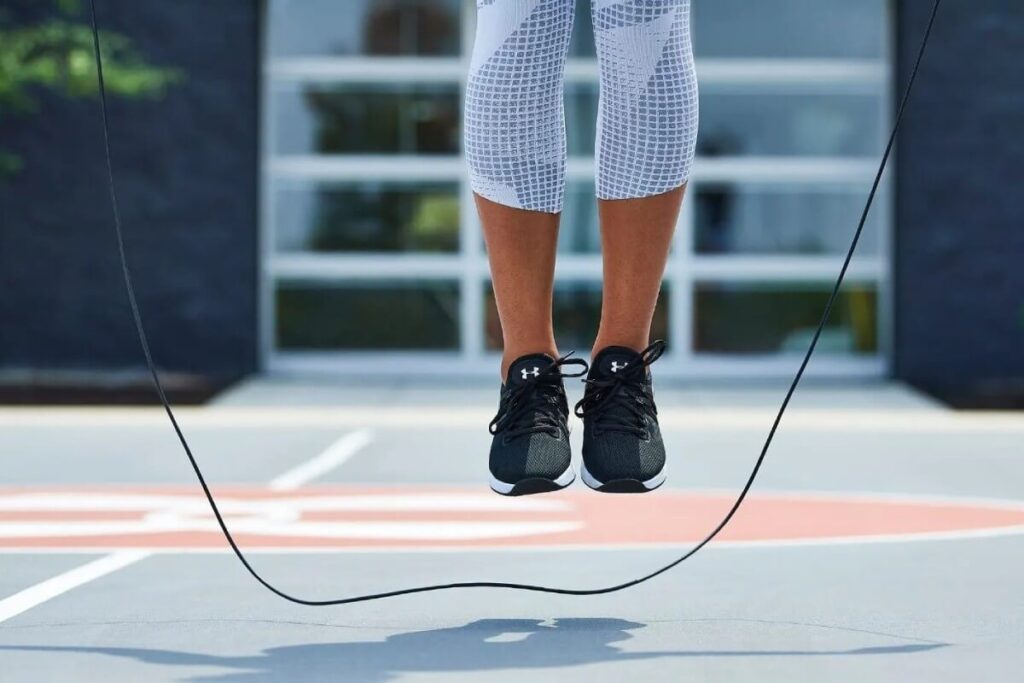
1. Speed
Athletes from various sports like boxing use jump rope to increase speed and muscle coordination. One of the most important factors affecting speed is rope length.
The longer the rope, the longer it takes to complete one jump cycle. Athletes who want to maximize speed must pay attention to rope length then. Inexperienced jumpers need to pay attention, too, because a fast rope requires more skill to handle than a slow or medium paced one.
Generally, beginners are advised to start with a slow or medium paced rope and keep advancing to faster ropes as their skill improves. All these considerations around rope length make it very important.
2. Effectiveness of Exercise
It’s one thing to exercise and another thing for your exercise to be effective. Although jump rope seems like one of the easier exercises to master, there is one thing that varies for different fitness goals and levels of skill: jump rope length.
Longer ropes make your movements slower. This in turn stresses your muscles more and tires you out faster. It increases neither your speed nor your skill, it only frustrates you. Shorter ropes can cause you to trip over and interrupt your rhythm. Using the proper jump rope length saves you all these troubles.
3. Injury
With every exercise, there’s risk of injury. This is why form and technique are so important to not only make the exercises effective, but to keep you safe. Form and technique are easy enough to master with jump rope, but the wrong rope length could potentially lead to injury.
Using a long rope increases the chances of entanglement or tripping, and any number of accidents could ensue. A short rope isn’t much better. It can trip you up and lead to a fall, or lash your skin painfully.
Using the correct rope length not only makes your exercise more fulfilling, it keeps you safe as well.
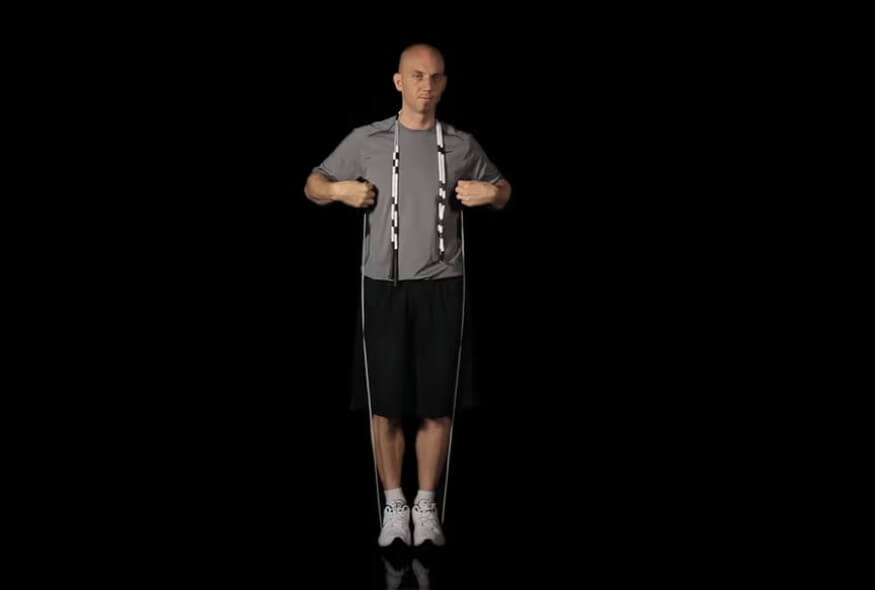
How to Measure A Jump Rope
How can you know whether your jump rope is the right length? Should you just do trial and error till you get it? It’s quite easy to measure jump rope, and you don’t have to do trial and error. There are several ways to measure your jump rope. Let’s look at some.
1. By Hand
One easy hack for jump rope sizing is to use your hand to measure your rope. It’s a simple 3-step process:
- Step One
Take your skipping rope, find the midpoint, and step on it. You can easily do that by making sure the handles rise to the same length.
- Step Two
Pull up the rope so that it’s taut and straight, then rest the handles against your body.
- Step Three
Check to see where the rope ends, excluding the handles. If the rope ends somewhere around your chest or armpits, you’ve got a winner. If it’s too short, you’ll need a new one. If it’s too long, you’ll need to learn how to shorten a jump rope.
2. Caveats
That said, this is simply an average. There are some caveats like what type of rope you’re using, how long the handles are, and your fitness goals.
Wire ropes would be slightly shorter than plastic ropes, for example, because wires are more tailored towards speed. It’s much easier to get into double-unders using wire ropes than any other type.
Longer handles would require shorter ropes because the longer the handle, the wider the arc diameter as you swing, especially if you hold it properly at the tip.
If you’re a beginner, stick to the average so that you have enough wiggle room to make mistakes and improve your technique. As you get better, reduce the rope length to make your movements faster and more efficient.
If you’re into something totally different like double dutch skipping, there’s a whole other set of rules for that.
3. Length Chart
What if you can’t stand on the rope to measure? Most times the dilemma of size happens at the store, and several stores won’t allow you to open up the rope to check length. So you must find another way to check the rope length.
Another way you can measure the right jump rope length is to use the jump rope length chart. A general rule is to add about 3 feet to your height, but the chart offers something a bit more exact. Check out the chart below:
| Height | Rope Length |
|---|---|
| 3’3″ – 3’5″ | 6’4″ |
| 3’5″ – 3’7″ | 6’6″ |
| 3’7″ – 3’9″ | 6’8″ |
| 3’9″ – 3’11” | 6’10” |
| 3’11” – 4’1″ | 6’12” |
| 4’1″ – 4’3″ | 7’2″ |
| 4’3″ – 4’5″ | 7’4″ |
| 4’5″ – 4’7″ | 7’6″ |
| 4’7″ – 4’9″ | 7’8″ |
| 4’9″ – 4’11” | 7’10” |
| 4’11 – 5’1 | 7’12” |
| 5’1″ – 5’3″ | 8’2″ |
| 5’3″ – 5’5″ | 8’4″ |
| 5’5″ – 5’7″ | 8’6″ |
| 5’7″ – 5’9″ | 8’8″ |
| 5’9″ – 5’11” | 8’10” |
| 5’11” – 6’1″ | 8’12” |
| 6’1″ – 6’3″ | 9’2″ |
| 6’3″ – 6’5″ | 9’4″ |
How to Adjust Your Jump Rope to Your Height
Because the rope production companies can’t make every single size, you might have to adjust your rope size to suit you perfectly. If your rope is too short, you’ll need a new one. If your rope is too long, however, you can adjust it to fit you. So let’s talk about how to shorten a jump rope.
1. Knots
You can shorten your jump rope by tying it into knots. This is particularly useful when you’re still trying out your rope and not completely sure of your preferred length. It also helps with weighted ropes, which are extremely difficult to cut. So if you’re not willing or able to snip your rope and it’s only slightly longer than you want, tie knots into it.
2. Snipping
Common among wire ropes especially, snipping is a more permanent way of shortening your jump rope. Speed ropes usually come with screws that you can loosen to adjust the wire length. You can then cut or snip off the excess part. Make sure you only snip when you’re absolutely sure about the length.
3. Adjustable Jump Rope
Adjustable jump ropes allow you to adjust the length back and forth as you please without any cutting. This is very convenient for athletes who do different movements with jump rope or keep learning new tricks. It’s also awesome if more than one person uses the rope.
The WOD Nation speed jump rope is one of my favorites. One of the best jump ropes for fitness, it’s super fast and amazing for experienced athletes. It’s also quite easy to adjust and snip off. It also comes with an extra cable just in case you mess up the first one or wear it out. If you’re looking for a speed rope, this is the one.
FAQ
How Do I Know if My Jump Rope Is Too Long?
You’ll know your jump rope is too long if it keeps bouncing off the floor or getting tangled as you jump.
You can also tell by holding the rope down at the middle with your foot and raising it tautly to your chest. It’s too long if the ends of the ropes, excluding the handles, are above your chest.
Is It Better to Have a Shorter or Longer Jump Rope?
It all depends on what type of rope you’re using, how long the handles are, your level of skill, and your fitness goals.
A wire rope should be shorter because it’s more geared towards speed, for example. Also because of speed, experienced athletes prefer shorter ropes but a beginner is better off with a longer rope to allow enough leeway for the learning process. Generally, as you get better your rope should get shorter.
Should My Jump Rope Hit the Ground?
I think it’s good for beginners. The “tick” sound it makes as it brushes the floor can help you figure out your rhythm and know when you’re slowing down or going too fast.
If you’re doing double-unders or building up speed, though, your rope hitting the ground might slow you down. So it’s up to you and your situation.
What Size Jump Rope Do I Need?
If you’re jumping fast, use a short wire rope. If you’re jumping for fun or just to warm up, you can use the average height.
Conclusion
So you now know how to pick the perfect jump rope size for yourself. Use the chart or the hand method to figure out the average length for you. A professional athlete using a wire rope should reduce that slightly while a beginner or casual athlete using a plastic rope should stick to it.
You also know how to size a jump rope. Make sure you don’t snip unless you’re absolutely sure, and you can use knots or adjustable jump ropes.
Now it’s your turn! Are you a pro athlete or a casual fitness enthusiast? What’s your preferred length? Did I miss anything? Talk to me in the comments!
Also read:
- Best Jump Rope
- Best Jump Rope For Boxing
- How To Do Double Unders
- Jump Rope vs Speed Rope
- Jumping Jacks vs Jump Rope
- How To Get Better At Jump Rope
- What Muscles Used in Jumping Rope
References:
- JUMP ROPE ACTIVITY CARD // Body and Mind: https://www.cdc.gov/healthyschools/bam/cards/jumprope.html
Why Trust Us?
With over 20 years in Olympic Weightlifting, our team does its best to provide the audience with ultimate support and meet the needs and requirements of advanced athletes and professional lifters, as well as people who strive to open new opportunities and develop their physical capabilities with us.
By trusting the recommendations of our certified experts in coaching, nutrition, dietology, and sports training programming, as well as scientific consultants, and physiotherapists, we provide you with thorough, well-considered, and scientifically proven content. All the information given in the articles concerning workout programming, separate exercises, and athletic performance, in general, is based on verified data. We ensure that you can rely on our professionals’ pieces of advice and recommendations that can be treated as personalized ones which will benefit you and fully meet your needs.
The product testing process is described in more detail here
Author: Ihor Shymechko
Pro Olympic Weightlifter, Coach
Best Results: Snatch – 208 kg,
C&J – 240 kg
Ihor has been a professional weightlifter since 1996, boasting over two decades of competition experience. His notable achievements include clinching the European Championship in 2009 and securing a silver medal in the 105kg division at the Senior World Championships in 2011. Ihor represented his country in the 2008, 2012, and 2016 Summer Olympics. After retiring from competitive weightlifting, he transitioned to coaching, leveraging his vast experience to guide athletes who now compete on both national and international stages.



